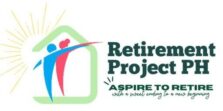Understanding Sequence of Returns Risk and Protecting Your Retirement
When it comes to planning for retirement, there are many factors to consider in order to ensure a financially secure future. One important concept that often gets mentioned in online articles and financial discussions is “sequence of returns risk.” While it may sound complex, it is actually a fairly straightforward concept that can have a significant impact on your retirement savings.
What is Sequence of Returns Risk?
Sequence of returns risk refers to the risk associated with the timing of cashing out your investments. In simple terms, it means that the order in which you experience investment gains and losses can have a profound effect on your retirement savings.
Imagine you are withdrawing money from your retirement fund every year to cover your living expenses. If the stock market experiences a significant downturn just as you start making withdrawals, it can have a detrimental effect on your portfolio. Even if the market eventually recovers, the withdrawals made during the downturn can significantly shrink your retirement savings. With less money left in your account to benefit from the market’s recovery, it becomes harder for your investments to regain their value.
The key takeaway from sequence of returns risk is that timing is everything. Experiencing losses early on in your retirement can have a much more significant impact on your financial well-being compared to experiencing the same losses later in life.
Protecting Your Retirement from Sequence of Returns Risk
While it is impossible to predict market fluctuations with certainty, there are steps you can take to protect your retirement savings from sequence of returns risk:
1. Diversify Your Investments
One way to mitigate the impact of sequence of returns risk is to diversify your investment portfolio. By spreading your investments across different asset classes, such as stocks, bonds, and real estate, you can reduce the potential impact of a market downturn on your overall portfolio. Diversification can help ensure that a single loss in one investment does not have a catastrophic effect on your retirement savings.
2. Consider a Bucket Strategy
The bucket strategy involves segmenting your retirement savings into different “buckets” based on your time horizon and risk tolerance. The idea is to have different buckets of money that can be used for different time periods, allowing you to weather market volatility without having to sell investments at a loss. This strategy can help protect your retirement savings from the negative impact of sequence of returns risk.
3. Maintain a Cash Reserve
Having a cash reserve or emergency fund is essential for any retiree. By keeping a portion of your retirement savings in cash or highly liquid investments, you can ensure that you have enough funds to cover your expenses during market downturns. This can prevent you from having to sell investments at unfavorable prices and allow you to ride out any temporary market fluctuations.
4. Work with a Financial Advisor
Seeking guidance from a qualified financial advisor can be invaluable when it comes to protecting your retirement savings from sequence of returns risk. A financial advisor can help you create a comprehensive retirement plan that takes into account your unique financial goals, risk tolerance, and time horizon. They can also provide guidance on investment strategies and help you make informed decisions during periods of market volatility.
Conclusion
Sequence of returns risk is an important concept to understand for anyone relying on their retirement savings to fund their post-work life. By recognizing the potential impact of the timing of investment gains and losses, you can take steps to protect your retirement savings from this risk. Diversification, implementing a bucket strategy, maintaining a cash reserve, and seeking professional advice are all strategies that can help safeguard your financial future. Remember, planning for retirement is a long-term endeavor, and being proactive in managing sequence of returns risk can go a long way in ensuring a comfortable and secure retirement.






